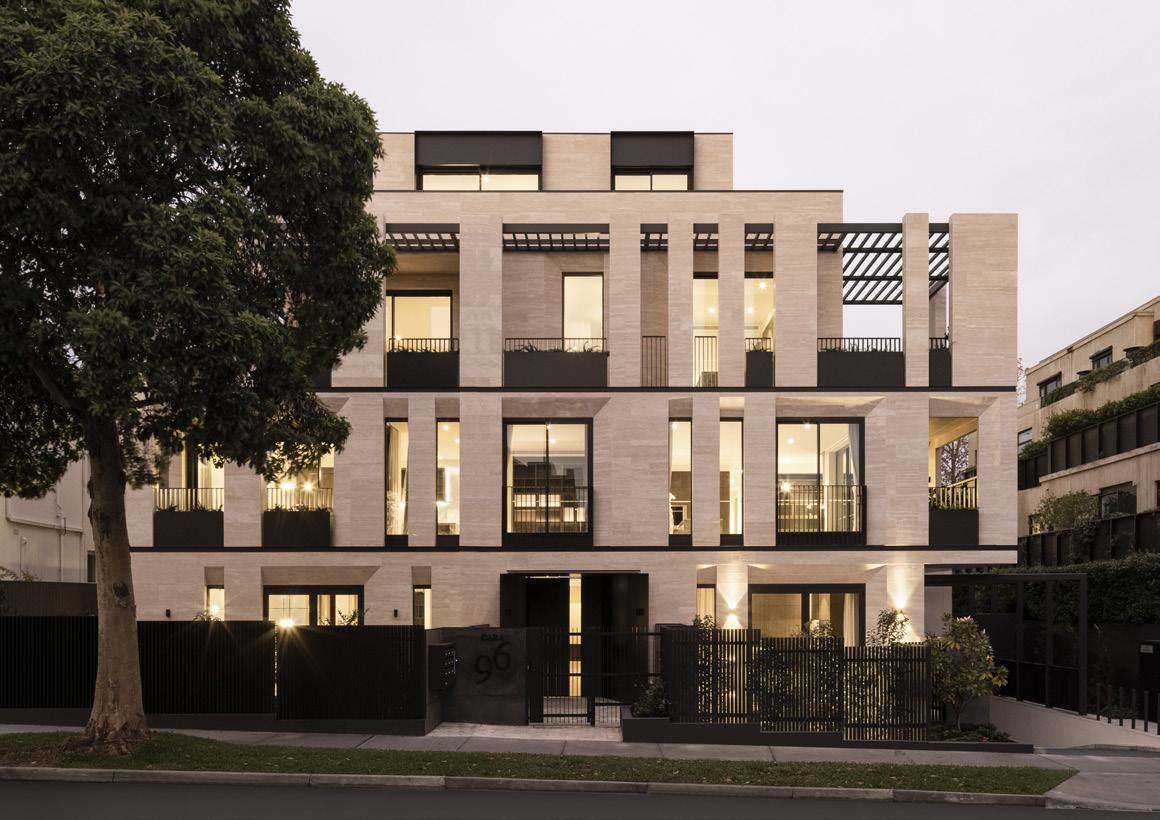
5 minute read
The property construction industry in 2023.
Written by Rotem Rotenberg, Cobild, (03) 9827 1217 | www.cobild.com.au
The past three years have been a rollercoaster that we have all been riding the ups and downs together. The property and construction industry have had to embrace the challenges faced, and as an industry we always find solutions. One of those challenges, has been the increased construction costs over the past 12-18 months. The relative inflationary pressure, and supply chain challenges being faced globally has had a compounding and substantial effect on the construction industry and accordingly the financial viability of some projects.
Advertisement
Typically construction contracts are entered into between the Principal and Contractor, using an amended Design and Construction contracts (AS4300 or AS4902). These contracts place the majority of the risk on the Contractor. In these inflationary times, it means the Contractor bears the risk of supply of materials, as well the rise and falls of costs that materialize during the term of the construction contract. Subsequently this risk is distributed to sub-contractors where possible.
For companies that have been tinkering on the border line of solvency, these past 18 months have tipped some of them over the edge into ‘the valley of death’, and for other companies like Cobild, they have been able to leverage relationships across the entire ecosystem to come out stronger.
CONSTRUCTION COSTS CAN BE BROKEN DOWN INTO THREE BUCKETS:
1 2 3
Trade costs (traditional sub-contractor prices)
Material costs
These past 18 months have seen a rise in all three categories, the total impact has been an increase of between 16-20% on the overall cost of construction.
Let’s explore these in more detail.
TRADE COSTS
The industry’s (and all industries) reality is that yesterday’s price is not today’s price, and accordingly the market has shifted, yielding the most dramatic change that I have seen in my time in construction. Buying a cup of coffee and a sandwich is more expensive a year ago than it is today.
The challenge has been compounding, with cost escalation for material and labour, and moreover the ability to get the right number of trades on site to deliver the program.
Unfortunately, we have seen trades come unstuck across the industry with the rising costs and go into liquidation at the eleventh hour on multiple projects. These were great people who had exceptional business, who just couldn’t manage the changing landscape – they made poor decisions, and the impacts were felt this year. This trend has been identified across all builders in every market segment – from your builder who is working out of his van, to the top tier builders in Australia and globally.
Trades are passing on 100% of all cost escalation to Builders, and this is why new projects are seeing substantial changes in construction costs. For live contracted projects Builders have had to mitigate these costs as much as possible by leveraging relationships built over years, offer better payment terms, and sharing the cost escalation where viable. The market landscape has shifted and if you are in business, and still stuck on pre-covid construction rates you are kidding yourself on getting a project off the ground.
As a business we have absorbed these cost increases on the contracts that were on foot and signed in 2021 and early 2022. We are in the long game, and accordingly this gives us clarity that after so many good years in our industry, a couple of challenging years is inevitable - that’s the reality of being in business.
With the ever-changing market, a partnership approach and open discussions around cost escalations with our trades, has been the only way to maintain momentum on projects.

MATERIAL COSTS
Suppliers have had to work closely with contractors and their clients to provide goods. Freight has increased astronomically over the past 18 months with container pricing rising from $USD2,000 to over $USD12,000 a container – this is reverting (refer to the global index online). We’ve also seen considerable shipping delays on goods, for example, appliances taking up to 18 months to arrive – these are new problems our industry is have having to solve. Builders have been bearing the cost of shipping, using international air freight, or simply working with clients and consultants to find alternative products that can be supplied on time - everyone has had to band together to make this a reality.
PRELIMINARY COSTS
It has been well publicized that human capital globally has been the major shortage. Our borders have been closed for business, and accordingly this has driven up the salaries across the construction industry, and subsequently increasing a major input of costs for preliminaries. ‘A’ talent within the industry is few and far between right now so word of advice is take care of your people! Protracted programs - Pre-covid, program was a science. We could forecast the number of people required each day on our construction sites, and measure the probability of achieving our programs with our clients. 2022 started with mandatory isolation of seven days for close contacts, this was a disaster for the industry – at no point could you program with certainty when people would attend site or not. A great example of this, our main joiner was down to a workforce of one third of his production staff, and that doesn’t mean you’re at 1/3 capacity, its more like 20-25% of capacity.
These impacts are now subsiding and we can see light at the end of the tunnel, and numbers on our construction sites are increasing.
Further to this, substantial payouts from insurance companies over the past 5 years from the Lacross Fire, Opeal Tower, and now the floods…insurance premiums have increased substantially, and just this next review period 10-15%, and potentially more pending your claims history and the companies balance sheet strength.
TENDERING – OUR DO’S AND DON’T’S
Our business has always been a relationship based business, with a clear focus on our founding value of ‘relationships for life’. This means that all our work is from repeat clients or all referred work. This is the best way to be in business.

Some key insights from a Builders lens if you as a prospective client are exploring tendering:
1. Ensure that you are going to a select group of 3 builders – more than this really deters builders from putting the energy into a tender. Tenders will cost a builder between $20-30K if not more
2. Does the project have funding? And have you met the financial hurdles?
3. Completed your due diligence with your Financier on the ability for the bank to back
4. Visit their projects – “your eyes don’t lie”
2023 And Beyond
We are confident that construction costs will stabilise in the 2023, and the pressure on supply chain and labour shortages will subside. It is evident that some projects are not starting and the appetite from trades to price projects has started to come back, big caveat here – it is contingent on the number of infrastructure projects that continue, and opening up of the borders to allow more immigrants into the country that will add value to the entire economy.
My five key take aways over the past 12-18 months:
1. Always partner with the right people (across the entire supply chain)
2. Communications is key – over communicate
3. Invest in your people – they are the soul and life blood of a business
4. Things are turbulent, always have a Plan B, C, D, E….Z
5. Be resilient – don’t let things get you down, if you get knocked down jump up and go again!








